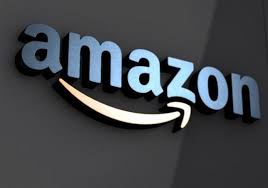When it comes to measuring profitability and optimizing costs in your Amazon FBA (Fulfillment by Amazon) business, there are several performance metrics and analytics you can utilize. These metrics can provide valuable insights into the financial health of your business and help you make data-driven decisions to improve profitability and reduce costs. Here are some key metrics and analytics to consider:
- Gross Profit: Gross profit is the revenue generated from sales minus the cost of goods sold (COGS). It gives you an indication of how much money you are making after accounting for the direct costs associated with your products.
- Net Profit: Net profit takes into account all the expenses associated with running your Amazon FBA business, including COGS, Amazon fees, advertising costs, storage fees, and other overhead expenses. It is calculated by subtracting all expenses from your total revenue.
- Profit Margin: Profit margin is the percentage of revenue that represents profit. It is calculated by dividing net profit by total revenue and multiplying by 100. A higher profit margin indicates better profitability.
- Return on Investment (ROI): ROI measures the profitability of an investment relative to its cost. In the context of Amazon FBA, it can be calculated by dividing net profit by the total investment (including product costs, shipping fees, advertising costs, etc.) and multiplying by 100.
- Average Selling Price (ASP): ASP is the average price at which your products are sold. By monitoring the ASP, you can identify pricing trends and adjust your pricing strategy to optimize profitability.
- Conversion Rate: Conversion rate is the percentage of visitors to your product listing who make a purchase. Monitoring and improving your conversion rate can help you increase sales and maximize revenue.
- Advertising Cost of Sales (ACoS): ACoS is a metric specific to Amazon advertising. It represents the ratio of advertising spend to the attributed sales generated from those ads. A lower ACoS indicates more efficient advertising spend and better profitability.
- Inventory Turnover: Inventory turnover measures how quickly you sell through your inventory. It is calculated by dividing the cost of goods sold by the average inventory value. Optimizing inventory turnover can help you reduce storage fees and avoid stockouts or overstocking.
- Cost of Goods Sold (COGS): COGS includes the direct costs associated with producing or sourcing your products, such as manufacturing costs, packaging costs, and shipping fees. Tracking and managing your COGS is crucial for optimizing profitability.
- Fulfillment Costs: Fulfillment costs include Amazon’s fees for picking, packing, and shipping your products. By analyzing these costs, you can identify opportunities to reduce expenses, such as optimizing packaging or exploring alternative fulfillment methods.
- Unit Economics: This metric allows you to analyze the profitability of individual products by calculating the profit or loss generated by each unit sold. By comparing unit economics across your product portfolio, you can identify high-margin products and low-margin products that you may need to optimize or remove from your inventory
- Return on Investment (ROI): ROI measures the return on your investment in inventory. It helps you evaluate the profitability of your investment by dividing the net profit generated by your inventory by the total amount invested. Monitoring ROI can assist in determining which products are worth restocking and which may not be performing well.
- Advertising Cost of Sales (ACoS): ACoS measures the advertising spend as a percentage of the total sales generated from advertising campaigns. It helps assess the effectiveness of your advertising efforts and optimize advertising spend for maximum profitability.
- Conversion Rate: Conversion rate measures the percentage of visitors to your product listings who make a purchase. Monitoring conversion rates can help identify opportunities for optimizing your product listings, images, pricing, and customer reviews to increase sales and profitability.
- Inventory Turnover: This metric measures how quickly you’re selling your inventory by dividing the cost of goods sold by the average inventory value. A higher inventory turnover indicates efficient inventory management and reduces storage costs.
To effectively measure profitability and optimize costs, it’s essential to track these metrics regularly and analyze the data over time. Consider using analytics tools and software specifically designed for Amazon sellers, such as Amazon Seller Central’s reporting features or third-party analytics platforms, to gain deeper insights into your business’s performance.
